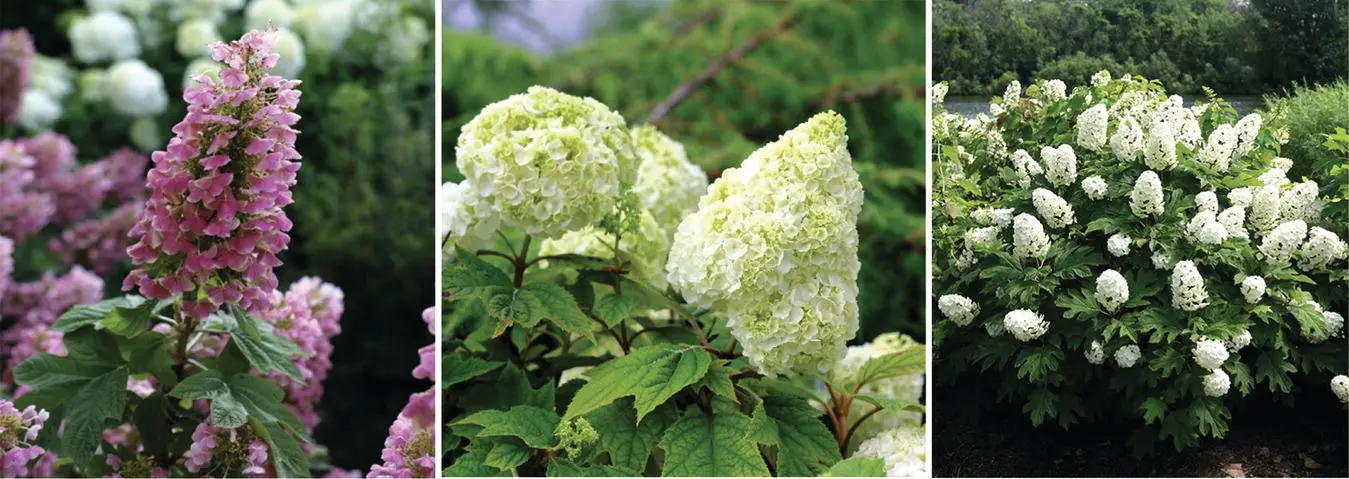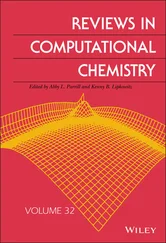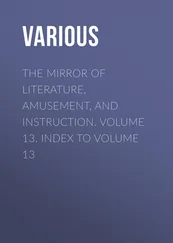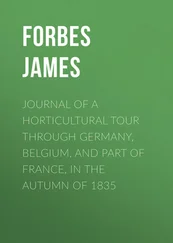Horticultural Reviews, Volume 49
Здесь есть возможность читать онлайн «Horticultural Reviews, Volume 49» — ознакомительный отрывок электронной книги совершенно бесплатно, а после прочтения отрывка купить полную версию. В некоторых случаях можно слушать аудио, скачать через торрент в формате fb2 и присутствует краткое содержание. Жанр: unrecognised, на английском языке. Описание произведения, (предисловие) а так же отзывы посетителей доступны на портале библиотеки ЛибКат.
- Название:Horticultural Reviews, Volume 49
- Автор:
- Жанр:
- Год:неизвестен
- ISBN:нет данных
- Рейтинг книги:3 / 5. Голосов: 1
-
Избранное:Добавить в избранное
- Отзывы:
-
Ваша оценка:
- 60
- 1
- 2
- 3
- 4
- 5
Horticultural Reviews, Volume 49: краткое содержание, описание и аннотация
Предлагаем к чтению аннотацию, описание, краткое содержание или предисловие (зависит от того, что написал сам автор книги «Horticultural Reviews, Volume 49»). Если вы не нашли необходимую информацию о книге — напишите в комментариях, мы постараемся отыскать её.
Hydrangea quercifolia
Horticultural Reviews, Volume 49 — читать онлайн ознакомительный отрывок
Ниже представлен текст книги, разбитый по страницам. Система сохранения места последней прочитанной страницы, позволяет с удобством читать онлайн бесплатно книгу «Horticultural Reviews, Volume 49», без необходимости каждый раз заново искать на чём Вы остановились. Поставьте закладку, и сможете в любой момент перейти на страницу, на которой закончили чтение.
Интервал:
Закладка:
2van Gelderen and van Gelderen (2004).
3data not available.
4 Reed (2010).
5 Reed and Alexander (2015).

Figure 1.8 Photographs of some commercial cultivars of Hydrangea quercifolia . Left: Gatsby Pink; center: Gatsby Moon; right: Gatsby Gal
( Source : Photo credits: Spring Meadow Nurseries, ©Proven Winners®, Color Choice®.)
The USDA‐ARS Floral and Nursery Crops Laboratory have been breeding H. quercifolia since 1996, with the primary goal of developing compact cultivars. Two of the cultivar introductions, ‘Munchkin’ and ‘Ruby Slippers’, are more compact than the species, reaching only about 1 m in height (Reed 2010). As the name implies, ‘Ruby Slippers’ has sepals that age to deep pink, nearly red, and ‘Munchkin’ has a tighter growth habit with lighter pink sepals. ‘Ruby Slippers’ is an F 2selection from a cross between ‘Pee Wee’ and ‘Flemygea’ (trade name Snow Queen), while ‘Munchkin’ is an F2 selection from open pollinated ‘Sike’s Dwarf’. More recently, ‘Queen of Hearts’ was introduced, which is not as compact, growing to approximately 2 m tall (Reed and Alexander 2015). Blooming about 7 to 10 days later than most with slightly larger panicles than the previous introductions, ‘Queen of Hearts’ is a selection from the same F2 population as ‘Ruby Slippers’.
‘Pee Wee’ is a relatively compact cultivar reaching 1.5 m tall, but has fairly small panicles, up to 12 cm long and with sepals that do not age to pink, but to brown. A yellow leaved sport of ‘Pee Wee’ was identified and is available as ‘Little Honey’. ‘Sike’s Dwarf’ is another compact cultivar growing 1.5 m tall and wide, with flowers larger than those of ‘Pee Wee’, and sepals that age to pink.
There are at least four double flowered cultivars available commercially. ‘Brido’ (trade name Snowflake) has dense panicles to 30 cm in length, with double flowers that weigh down the branches and tend to make them droop. Discovered in the wild in Alabama in 1969, ‘Brido’ is a full‐size cultivar reaching 3 m tall at maturity. ‘Shannon’ is also double flowered, with up to 20 sepals per floret and less dense panicles that are held more upright than ‘Brido’ (Dirr 2004). ‘Shannon’ is also a relatively compact cultivar reaching around 1.5 m tall. Other possible sources of double flowers are ‘Cloud Nine’ and ‘Horvaria’, both of which are comparable to ‘Brido’ (van Gelderen and van Gelderen 2004).
A commonly grown full size cultivar, ‘Flemygea’, grows to 2 m tall, with larger sepals than the species on 18 cm long upright panicles that age to light pink. Three cultivars, ‘Roanoke’, ‘Harmony’, and ‘Vaughn’s Lillie’ have extremely dense mophead‐like, rounded inflorescences that cause the branches to sag under the weight; all three are full size cultivars. ‘Alice’ is one of the largest cultivars available, reaching 4.5 m tall and wide, with large 30 cm panicles and sepals that age to pink. ‘Late Hand’ has large deeply lobed leaves that have the appearance of a hand shape; as mentioned previously, this cultivar is also reported to bloom up to a month later than is typical for the species (Dirr 2004; van Gelderen and van Gelderen 2004).
Wild collected germplasm is currently available as seed from the USDA National Plant Germplasm System (NPGS) in limited quantities. The accessions represent only a small portion of the species’ endemic range ( Table 1.2). There are eight accessions available (five from Alabama and three from Mississippi) as of April 2020. This likely does not fully represent the existing genetic diversity for the species. Range‐wide systematic germplasm collections were recently conducted (Sherwood et al. 2019) and seed samples that are representative of the existing genetic diversity will be made available to breeders and researchers through the NPGS.
Table 1.2 Wild Hydrangea quercifolia accessions available (as of June 2020) through USDA‐GRIN, maintained in Beltsville, MD.
| ID | Plant name | Date collected | State | Coordinates or Location |
|---|---|---|---|---|
| NA 74915 | RJLGA2003‐049 | 1 November 2003 | Alabama | N33.38361W86.84194 |
| NA 74925 | MCCAL2004‐009 | 7 November 2004 | Alabama | N34.31472 W87.51222 |
| NA 80223 | MS‐2011‐033 | 21 September 2011 | Mississippi | N33.29412 W90.13285 |
| NA 80229 | MS‐2011‐039 | 21 September 2011 | Mississippi | N 33.91675 W 89.26345 |
| NA 80232 | MS‐2011‐042 | 22 September 2011 | Mississippi | N34.22403 W89.36282 |
| NA 78055 | LRC #7 | 19 September 2008 | Alabama | Little River Canyon National Preserve |
| NA 78023 | AL #32 | 17 September 2008 | Alabama | Kathy Stiles Freeland Preserve Habitat |
| NA 77995 | AL #4 | ‐ | Alabama | Bankhead National Forest |
H. Molecular Resources for Breeding
Molecular markers can be used to facilitate the selection process by screening germplasm for markers that are linked to a gene of interest. Many types of molecular markers exist and have been used for phylogenetic analyses (De Smet et al. 2015), hybrid verification (Rinehart and Reed 2010), linkage mapping (Waki et al. 2018; Wu et al. 2020), identification of unknown species (Joung et al. 2010), genetic diversity estimates (Rinehart et al. 2006; Reed and Rinehart 2007, 2009; Ito et al. 2013; Choi et al. 2017), and predicting success of interspecific hybridizations in Hydrangea (Granados Mendoza et al. 2013). Many types of markers have been used for these studies including simple sequence repeats (SSR, or microsatellites), single nucleotide polymorphisms (SNP), randomly amplified fragment polymorphisms (RAPD), rbcL sequence, plastid sequence markers (chloroplast and mitochondrial DNA), and internal transcribed spacer (ITS) sequences.
Molecular markers can be used to develop marker‐trait associations, which can then be used to guide parent or seedling selection (Collard and Mackill 2008). Genetic markers have yet to be used for selection in H. quercifolia , although success in other species has been realized and the first genetic map has recently been developed in H. macrophylla (Waki et al. 2018). Selecting for traits which cannot be reliably phenotyped until maturity, with markers, will increase breeding efficiency by allowing the breeder to know what characteristics to expect early in the breeding cycle, thereby potentially reducing the breeding cycle by several years. Markers linked to double flower and inflorescence type genes in H. macrophylla are a prime examples (Waki et al. 2018; Wu et al., 2020).
Microsatellites have been developed for Hydrangea that are informative at both the inter‐ and intraspecific level (Rinehart et al. 2006; Reed and Rinehart 2007, 2009; Choi et al. 2017; Hempel et al. 2018; Waki et al. 2018). Microsatellites are sequences of several nucleotides that repeat several times consecutively (Gupta et al. 1996). Thirty‐nine SSRs have been developed for H. macrophylla (Reed and Rinehart 2007), 14 of which were informative for determining species relationships within the genus, including H. quercifolia (Rinehart et al. 2006). Microsatellites have also been utilized in H. luteovenosa to estimate the genetic diversity and conservation status of a critically endangered population in South Korea (Ito et al. 2013; Choi et al. 2017). Recently, a genetic map of H. macrophylla with 147 SSR loci was developed (Waki et al. 2018); it is unknown if these markers would be useful in H. quercifolia .
Читать дальшеИнтервал:
Закладка:
Похожие книги на «Horticultural Reviews, Volume 49»
Представляем Вашему вниманию похожие книги на «Horticultural Reviews, Volume 49» списком для выбора. Мы отобрали схожую по названию и смыслу литературу в надежде предоставить читателям больше вариантов отыскать новые, интересные, ещё непрочитанные произведения.
Обсуждение, отзывы о книге «Horticultural Reviews, Volume 49» и просто собственные мнения читателей. Оставьте ваши комментарии, напишите, что Вы думаете о произведении, его смысле или главных героях. Укажите что конкретно понравилось, а что нет, и почему Вы так считаете.












